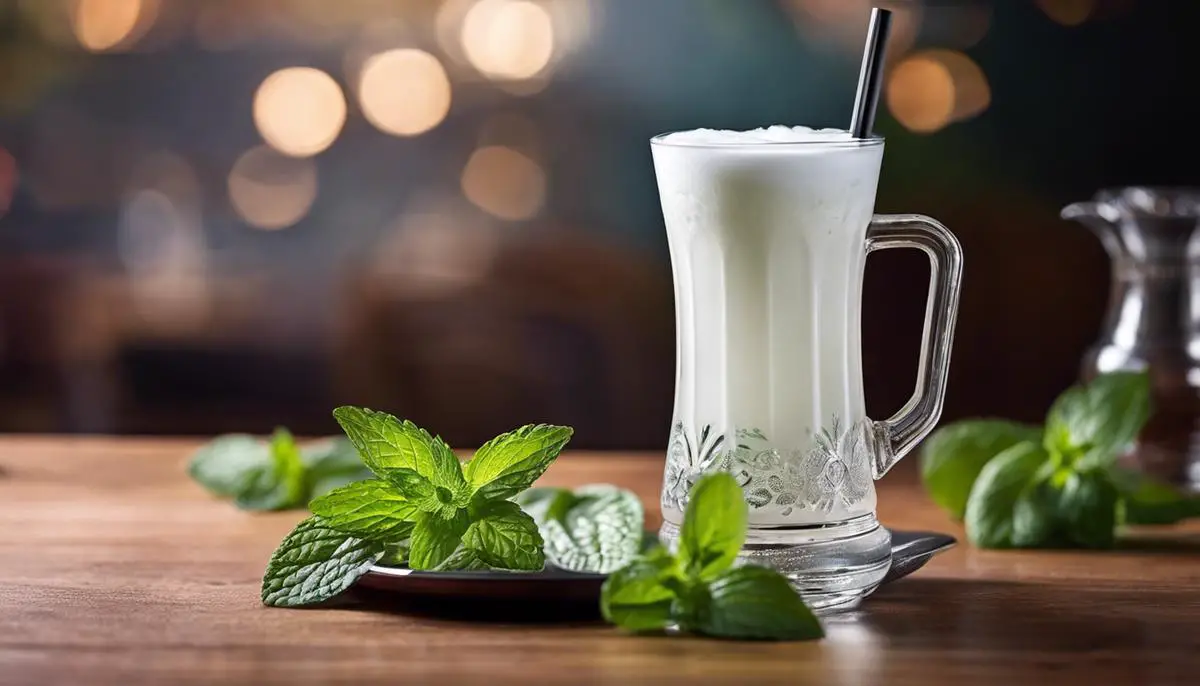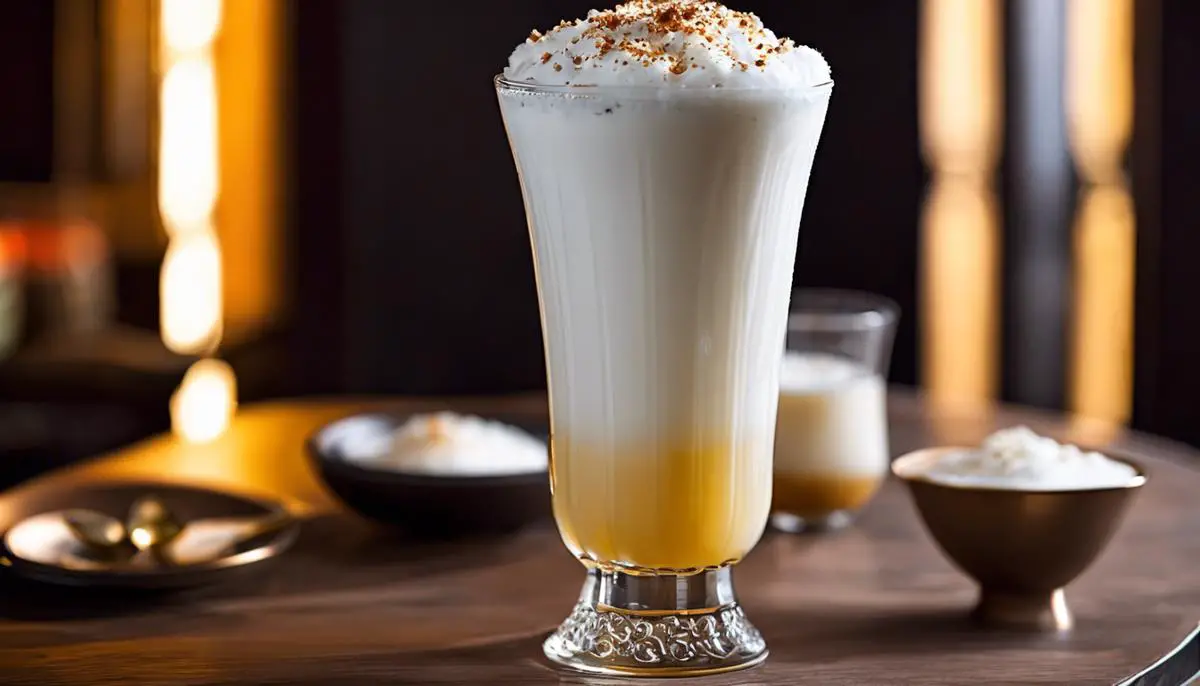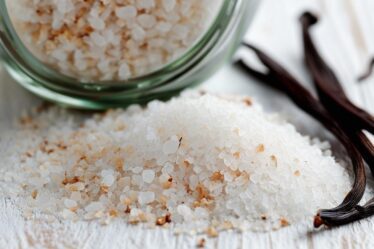
Immerse yourself in the captivating culture of the Middle East through one of its most treasured culinary traditions, Ayran. This timeless, refreshing yogurt beverage holds a cherished place in Middle Eastern cuisines and embraces the pleasure of simple, natural ingredients. Our journey will begin with defining Ayran, its origins and what makes it so unique. We’ll then embark on the detailed procedure of creating your own Ayran, a blend of just yogurt, water, and salt. The saga doesn’t end here; serving Ayran is an art in itself warranting meticulous attention. Explore the traditional way to present and savor this classical drink in our enlightening discussion.
Understanding What Ayran Is
The Enchanting World of Ayran: A Taste from the East
Enjoy stepping out of your comfort zone into a world of unexplored tastes? A culinary journey to the Middle East, perhaps, might just be the ticket. If you find joy in experimenting with new flavors, it’s time you met Ayran—a delightful, thirst-quenching drink emerging from the heart of the Middle East.
Humble Beginnings
Steeped in a rich history, the origins of Ayran transport us to the pastoral expanses of Central Asia. Its prime ingredient, yogurt, was traditionally made by Turkish nomads. As they wandered and toiled under the scorching sun, nothing quenched their thirst better than this creamy beverage.
A labor of love, Ayran is a blend that holds a high place in Turkish cuisine and culture. This culinary companion has transcended borders and has found a home in various cultures across the middle east, each offering their own little twist to the simple quintessential recipe.
The Ayran Experience
Ayran is not your typical beverage. It’s a smooth blend of yogurt, water, and a pinch of salt, whisked together into a creamy, frothy delight. Simple as the ingredients may sound, when twirled together, they give birth to a taste that is refreshingly unique.
The best choice for austere summer months, Ayran becomes a solace from the heat. This tart-tasting elixir is a favorite at the lunch table, the perfect accompaniment to a flavorful shawarma or a hearty plate of hummus and falafel.
Furthermore, the health benefits from this magical blend are plentiful. Its key ingredient, yogurt, is a haven for probiotics, which can do wonders for your digestive system. Not to mention its virtues of hydration and electrolyte balance, often leading Ayran to be hailed as nature’s own energy drink!
A Recipe so Simple, You Cannot Go Wrong
Here’s the beauty of Ayran—it’s incredibly easy to make. All you need is:
- 1 cup of plain yogurt
- 1 cup of cold water
- A pinch of salt
To prepare, simply combine the ingredients into a pitcher. Using an immersion blender, whisk until your Ayran turns creamy and frothy. Pour into a glass, garnish with some fresh mint if you’re feeling fancy, and voilà—your homemade Ayran is ready to serve!
It’s About Time You Tried It
In the spirit of culinary exploration, Ayran is much more than just a beverage—it’s a tradition that stitches together centuries of history and culture. So, the next time the sun strikes with its ruthless heat, grab that yogurt, add a dash of salt and water, and blend yourself an Ayran. It’s not just about quenching your thirst; it’s about partaking in an age-old ritual and experiencing a taste that has been beloved for generations.
Ikran! – a cheer to your health in Turkish – and to stepping outside of your culinary comfort zone. Bon appétit!

Procedure of Making Ayran
Delving deeper into the ocean of gastronomy, let’s explore further the art of concocting this historically rich beverage, Ayran. A word of caution to the brave culinary adventurers, while it may appear deceptively simple, this tantalizing blend requires patience and finesse. As it goes without saying, the essence of any delightful dish or beverage is the quality of its ingredients. And when it comes to Ayran, the story remains the same.
Most importantly, Ayran starts with yogurt. Seek out a high-quality, unsweetened yogurt full of those beneficial probiotics. While any good quality yogurt should suffice, a truly passionate food lover might opt for Greek or Turkish yogurt for an immersive experience. Yogurt lays at the heart of Ayran, constituting its primary ingredient, bringing that creamy fullness and depth that is characteristically Ayran.
Next is water, which not only determines the consistency of the Ayran but aids in ensuring its sublime refreshment factor. The best suggestion would be to use filtered or spring water for a smoother, more refined taste.
Let’s not forget about salt. It might sound simple, but remember, not every salt is the same. A sea salt or a pink Himalayan salt can lend a trace of complexity to the flavor profile and perfectly balance out the tanginess of the yogurt.
Moving onto the process to make traditional Ayran, ensuring the perfect blend depends on the ratio of your ingredients. Typically, a 2:1 ratio of yogurt to water is suggested as the starting point. However, finding ‘your’ perfect Ayran might require some experimentation, so feel free to adjust the levels of each ingredient.
Begin by pouring yogurt into a jug or a large bowl. Then add water to the yogurt gradually, while stirring to incorporate it. A blender or a whisk can be handy tools for this process, ensuring sufficient mixing to create a smooth texture.
Finally, add in salt according to your preference. It’s recommended to start off with less, as you can always add more. At this stage, whisk, blend or shake (if using a closeable container) all ingredients together until there is a frothy layer atop the mixture, usually indicative of a well-blended Ayran.
And voila! You have now crafted a glass of traditional Ayran, a comforting and refreshing beverage whose legacy traverses centuries and cultures. While Ayran is generally served chilled, accompanying spicy or rich meals to counterbalance flavors, there are no hard and fast rules.
So, Why stay confined to just tradition when you can get creative in your kitchen lab? Consider adding a tablespoon of mint or a squeeze of lemon and feel free to redefine this centuries-old drink. Remember, food is art, it’s a language, it’s creative, and it knows no boundaries. Enjoy your homemade Ayran and remember, the culinary adventure never stops. Happy experimenting, food lovers!

Serving Ayran
Diving further into the allure of Ayran, we’ve arrived at one of the most intriguing parts – its traditional serving and consumption. To truly appreciate Ayran, it’s crucial to serve and enjoy it in the authentic Turkish way, allowing for that complete immersion experience.
Classically, Ayran is served chilled in a tall glass or a cup made from copper or brass, often with a layer of froth on top. However, in more rural parts of the country, it is frequently enjoyed straight from a traditional jug or a ‘tas’, which is made out of metal. The tas is specifically designed to ensure the frothy texture of the Ayran is maintained while drinking, enhancing the flavor and experience.
As a drink enthused with cultural significance, it’s no surprise that Ayran accompanies Turkish cuisine just like a great wine would complement a richly flavored dish. In Turkey, Ayran is often consumed with various staples, including the famous Doner kebab, Lahmacun (Turkish pizza), or Borek, a mouth-watering stuffed pastry. Because of its cooling properties, Ayran is a favorite beverage to temper the heat of some of the more spice-laden Turkish dishes.
Furthermore, Ayran also plays a vital role in Turkish breakfasts. When served alongside cheese, olives, tomatoes, and bread, Ayran adds a creamy, tangy note that balances the rich flavors of this traditional start to the day.
Another popular Ayran variety in Turkey is the ‘Cacik’. It’s slightly thicker and includes sliced cucumbers and herbs. It can be consumed as a drink or used as a dip. While making Cacik, the usual 3:2 yogurt to water ratio for traditional Ayran becomes a 1:1 ratio, rendering it thicker.
It’s important to remember that Ayran is, at its heart, a customizable and adaptable drink. When serving Ayran, it could be the star of a meal, or it could just as easily be enjoyed as a refreshing midday pause. You can tweak its concentration or have it virtually salt-free depending on your taste preferences.
Preparing Ayran is not only about consuming a drink but an act of participating in a rich, culinary tradition packed with flavor and history. It’s a journey worth taking for any curious palate that appreciates novelty, a diverse taste exploration, and a refreshing twist. Be it with your favorite Turkish culinary fare or during a simple, tranquil afternoon, Ayran is a versatile delight that speaks of shared tastes and hospitality – a beautiful embodiment of cultural exchange.
Pleasures of the palate can become links that connect us across cultures, and when served right, Ayran does precisely that. So let the exploration begin and Ayran be your trusted companion. You might be surprised how a seemingly simple offering of water, yogurt, and a pinch of salt can open a whole new world of taste adventures!
To conclude, the journey through the rich and historical saga of Ayran ends here. Hopefully, you are now ready to enjoy this timeless creation, bridging the gap between the cultural and the culinary, promising an unforgettable gastronomic experience. Enjoy the Ayran journey!
P.S. – Be sure to ‘cheers’ with ‘Şerefe’, the Turkish toast for good health!

Delving into the world of Ayran, we’ve explored its soothing simplicity and rich heritage. The creation of this yogurt-based beverage, from articulating its fundamental ingredients to comprehending the process requires more than just culinary skills, it necessitates a touch of love and respect for its history. By embracing the traditional method of serving Ayran, we not only enhance the experience but appreciate the cultural nuances that make it unique. The essence of Ayran is rooted in its simplicity, making it not just a refreshing drink but a bridge connecting us to the vibrant Middle Eastern culture. Remember, the taste of Ayran isn’t merely in the flavor, but in the complete experience; from its preparation to its presentation.



